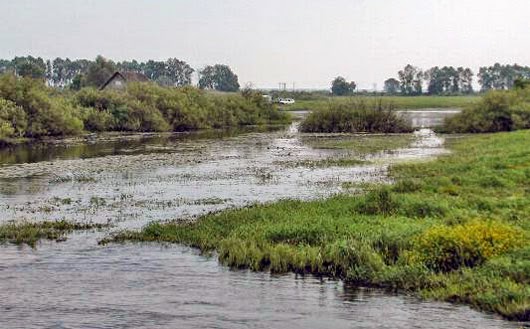By the 1930s, much of Europe was criss-crossed with a wide array of telegraph and telephone overhead wires. Telegraph lines were common, usually accompanying the growth of railroads and their depot and maintenance buildings. As such, they could be found as far west as Portugal, as far south as southern Italy (there were even some lines in Egypt), as far north as northern Norway, and as far east as the Russian steppes.
Telephone lines were common in prosperous Western Europe, but grew increasingly rare the further south and east the fighting advanced. Whatever technology they used, communication lines were vital and important strategic assets to all armies. Usually located alongside roads and rails, often at the edges of cultivated fields, communication line poles quickly became rocky and overgrown. As such, they make great linear obstacles that provide useful concealment to infantry and AFVs alike.
Materials
- Wide popsicle sticks ("tough depressors") - the thicker the better!
- Bamboo sticks or wooden dowel rods
- Thin basswood strips
- Tiny round beads or plasticard rod
- Wood glue
- Construction adhesive (optional)
- Sand, ballast, and small pebbles
- Clump foliage
- Static grass
- Earth-tone acrylic paints
- X-acto knife
- Black nylon thread (optional)
1. The first step is to choose the basic shape and contruction of your poles. 99% of poles were simply tree trunks, denuded of bark with wooden line support crossbars nailed on (Some were treated with pitch or tar to make them relatively weatherproof, giving them a dark brown appearance). Some, especially at the end of lines (near a town or structure) had a wood support beam added to take the extra weight and pull of the lines (see the pics above for an example). The crossbars weren't always at the very top of the pole either - many lines were carried alongside the pole at various heights.
I should point out one exception to the above and these were the concrete poles and metal crossbars installed throughout northern France in the 1930s. These poles are very distinctive, having a ladder-like construction. From what I understand, these lines were installed because the high soil acidity rotted the wood bases, causing the pole to collapse (great soil for wine grapes, not so much for wood). There are some manufacturers of these poles on the market.
2. For this tutorial, I'm doing a very basic, common construction of one pole and one small crossbar at the peak.
Start by marking each popsicle stick at various intervals for where the main pole will be glued. Above I've divided each stick by thirds. You may divide each stick at whatever length you'd like. You may also want to sand down the edges of the popsicle stick so it blends in more evenly with the game mat.
3. Cut each bamboo stick into 2" lengths - these will be the main poles. Glue each pole on the popsicle sticks where marked and let thoroughly dry.
If you want shattered and broken poles, just snap the poles at various heights. Communication poles are thick and tough and will often not break completely. Often they will snap and hang to one side from several pieces of wood. If you do snap the pole completely, leave the top portion off the base until after the next step.
4. Once the poles are dry, spread a thick layer of construction adhesive on the popsicle stick and apply basing material. I place several small pebbles along each stick to represent large rocks and boulders farmers have pulled out of their fields and dumped along the edges. This also adds weight to the stick to help it stay upright.
If you have any damaged tops of poles, push them slightly into the basing material now.
5. If you find the bases warping too much (a little warping is OK, they will straighten out when dry), paint the underside of each base with acrylic paint. Allow the paint to dry. Keep applying more coats to even out the warping.
6. Once everything is dry, it's time to move unto the crossbar supports. I cut small (~10mm) lengths of basswood strips. I then cut small notches to flatten out one side of the top of the pole and then glued each strip at the top of each pole.
7. Paint the bases using whatever earthen-tone acrylic paints you'd like.
8. To accurately weather the poles, paint them using a combination of brown, grey, and black. I used artist's ink, but washes or watered-down acrylic paint is fine. Try to avoid areas where the pole has snapped or broken as much as possible - the inside wood is often lighter in color.
9. Once the paint is dry, install the insulators. I cut very small lengths of plasticard rod and glued one on each side of the pole with CA glue. I did not bother painting them - many insulators were made of ceramic or glass, which was glossy in appearance. You can also use small craft beads. Common insulator colors included white (for ceramic or milk glass), clear green, clear red, brown, and black.
10. Add static grass and clump foliage to the base. The bases should like wild and overgrown, high enough to hide most infantry and conceal a good deal of most AFV hulls.
11. If you want, you can add wires using black nylon thread, glued around the insulators. You can also add road signs to the poles.




























































